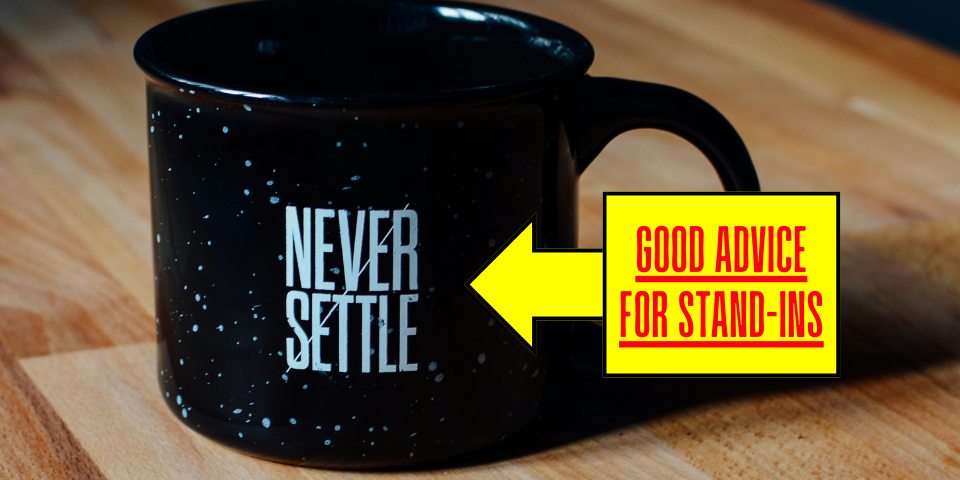Recently, a stand-in showed up to background holding right at her calltime. She explained to the background P.A. that she was on time. The background P.A. responded, “On time is late.”
It was a snarky reply, but a poignant one:
When you’re standing in on a project, you’re an important part of production and setup. If you’re there simply at your calltime, you may find you can’t work immediately when you are needed. But if you are early, you can get what you need done and once it hits crew call, you’ll be ready to work immediately when you are needed.
There are a number of things you need to do when you arrive to set as a stand-in. You will need to check in and get your voucher and label at the location where casting directs you. You may need to collect your color cover at a wardrobe truck or department some distance from your check-in location. You may want to get a made-to-order breakfast at the breakfast truck, which may be some distance from either of these two locations. You will probably also want to read your sides for the day.
Obviously, these steps take time. That time will become more precious if you encounter unexpected travel delays like traffic or a subway problem, or if you have trouble locating where you need to be. I’ve recently been bumped up to stand in after a stand-in for that day was caught in traffic and couldn’t make it by his calltime. He essentially lost his stand-in job for that day because of his lateness.
It might be wise to arrive anywhere from 15-45 minutes before your calltime when you are standing in. This kind of buffer allows you to have time to check in, get breakfast and eat it without feeling rushed, collect your color cover for the day, and read over your sides. Not only does this buffer allow for you to do these things, but it also gives you a considerable cushion for unexpected travel delays. When you regularly show up this early, even if you’re delayed, you will probably rarely end up “on time” or late.
Of course, you need to feel out every production to see how much time you need in order to accomplish everything you need to accomplish. You may not need as much buffer time if your calltime is well after crew call when breakfast is no longer served. Or 45 minutes early may be so early that breakfast isn’t even open! But if you make a point of being early to your stand-in job, and consider “on time” as “late,” you’ll find you nearly never stress about getting to your stand-in job on time and holding up production.
How early do you typically show up to set? Do you agree that “on time is late” when you are a stand-in? Voice your opinions below!






Leave A Comment